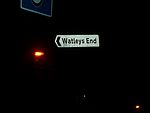Frampton Cotterell

Frampton Cotterell is a large village and parish, in South Gloucestershire, South West England, on the River Frome. The village is contiguous with Winterbourne to the south-west and Coalpit Heath to the east. The parish borders Iron Acton to the north and Westerleigh to the south-east, the large town of Yate is 2.1 miles (3.4 km) away. The village is 7.5 miles (12 km) north-east of the city of Bristol. The village has evolved from a once rural Gloucestershire village, to a partial dormitory village for Bristol. The population including adjoining Winterbourne was 14,694 in 2011 The population according to the UK crime statistics was around 9,385 and is increasing. The population was remeasured at the 2011 census and came to 6,520 for the parish alone.
Excerpt from the Wikipedia article Frampton Cotterell (License: CC BY-SA 3.0, Authors, Images).Frampton Cotterell
Frome Valley Walkway,
Geographical coordinates (GPS) Address Nearby Places Show on map
Geographical coordinates (GPS)
| Latitude | Longitude |
|---|---|
| N 51.54 ° | E -2.48 ° |
Address
Frome Valley Walkway
Frome Valley Walkway
BS36 2AA , Frampton Cotterell
England, United Kingdom
Open on Google Maps











